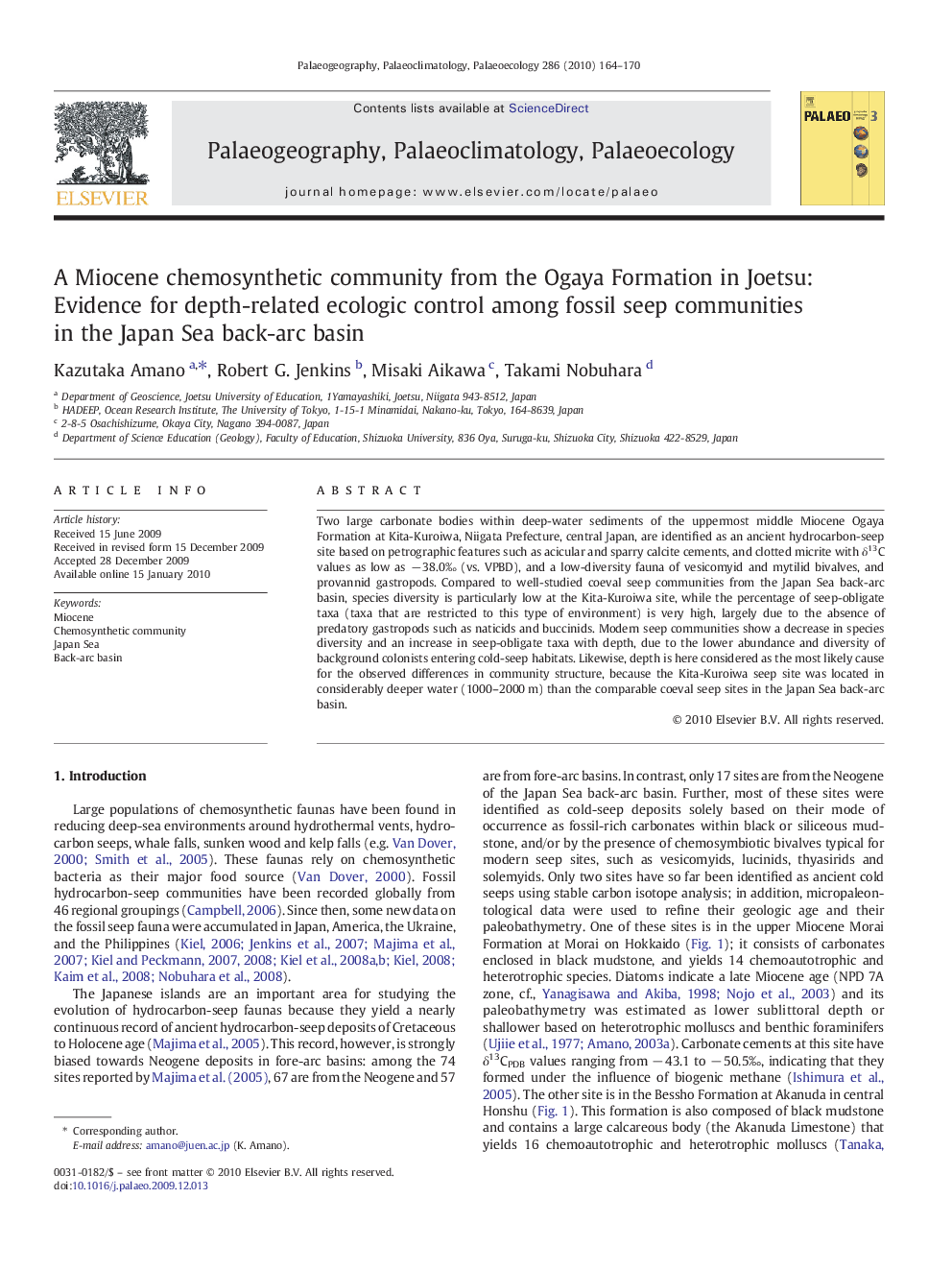| Article ID | Journal | Published Year | Pages | File Type |
|---|---|---|---|---|
| 4467823 | Palaeogeography, Palaeoclimatology, Palaeoecology | 2010 | 7 Pages |
Two large carbonate bodies within deep-water sediments of the uppermost middle Miocene Ogaya Formation at Kita-Kuroiwa, Niigata Prefecture, central Japan, are identified as an ancient hydrocarbon-seep site based on petrographic features such as acicular and sparry calcite cements, and clotted micrite with δ13C values as low as − 38.0‰ (vs. VPBD), and a low-diversity fauna of vesicomyid and mytilid bivalves, and provannid gastropods. Compared to well-studied coeval seep communities from the Japan Sea back-arc basin, species diversity is particularly low at the Kita-Kuroiwa site, while the percentage of seep-obligate taxa (taxa that are restricted to this type of environment) is very high, largely due to the absence of predatory gastropods such as naticids and buccinids. Modern seep communities show a decrease in species diversity and an increase in seep-obligate taxa with depth, due to the lower abundance and diversity of background colonists entering cold-seep habitats. Likewise, depth is here considered as the most likely cause for the observed differences in community structure, because the Kita-Kuroiwa seep site was located in considerably deeper water (1000–2000 m) than the comparable coeval seep sites in the Japan Sea back-arc basin.
